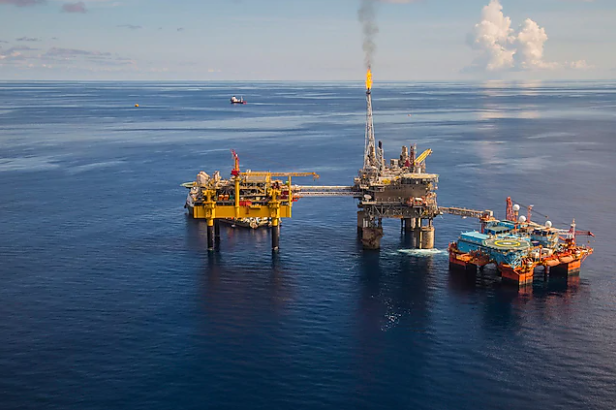US push for LNG in Philippines paints unrealistic picture, IEEFA says
By Damon Evans | Energy Voice | September 24, 2021 4:29AM
A recent white paper sponsored by the US Agency for International Development (USAID) promotes the benefits of liquefied natural gas (LNG) in the Philippines. But it makes overly optimistic claims about the financial, economic and environmental benefits of LNG, reckons the Institute for Energy Economics and Financial Analysis (IEEFA).

Malampaya gas field in the Philippines. (Photo: Energy Voice)
The USAID report “is based on questionable assumptions about global LNG prices, long-term demand and market viability of US exports to price-sensitive countries in Asia, according to a briefing note by IEEFA.
“The report also ignores recent findings from the international scientific community about the incompatibility of greenhouse gas-intensive fossil fuels like natural gas with global climate goals,” argues IEEFA.
“The sales pitch for US LNG in the Philippines seems to turn a blind eye to current dynamics in the global LNG market,” said Sam Reynolds, an IEEFA energy finance analyst and the briefing note’s author. “Contrary to the report’s claims, LNG is an inherently volatile and unreliable commodity, as demonstrated over the past two years.”
“The white paper also presents unrealistic forecasts for tolling and shipping rates from US liquefaction facilities to Asia, and does not consider the cost of regasification and other LNG-related infrastructure. The Philippines does not currently have an LNG import terminal and has almost no gas transmission infrastructure,” said IEEFA.
Several LNG import projects have been proposed, with at least two, led by First Gen and AG&P, looking set to start operation in the coming years. First Gen is developing its project to accelerate its ability to introduce LNG to the Philippines as early as Q3 2022 to serve the natural gas requirements of existing and future gas-fired power plants of third parties and First Gen LNG affiliates.
The Philippines currently relies on its legacy Malampaya field for gas supplies, but production is waning and therefore LNG imports are planned to make up for any shortfall and help meet any incremental demand.
“Higher costs associated with imported LNG and LNG-related infrastructure are likely to raise fuel costs for existing gas-fired power plants in the Philippines. This is likely to result in higher power prices, in contrast to the USAID report’s findings about the economic benefits of LNG relative to other power sources,” said IEEFA.
“Recent events in the Philippines and the global market also demonstrate that fossil fuels are less reliable than industry advocates claim. Volatile prices and barriers to global trade have resulted in higher prices and, in some cases, gas shortages for emerging markets in Asia,” argues IEEFA.
The idea that LNG can serve as a flexible ‘bridge fuel’ for power generation is based on technical and contractual circumstances that are not present in the Philippines market, according to Reynolds.
“A wholesale buildout of the Philippines’ LNG-to-power fleet would risk locking-in long-term dependence on a foreign imported fossil fuel, to the detriment of cleaner, cheaper domestic renewables,” Reynolds said.
The USAID-sponsored white paper champions the “environmental benefits of LNG.” However, “recent reports from both the International Energy Agency and the United Nations’ Intergovernmental Panel on Climate Change point to the incompatibility of natural gas and LNG with global climate targets,” said IEEFA.
“The current pipeline of LNG import terminals and LNG-to-power plants in the Philippines far exceeds demand, indicating a clear mismatch between investor expectations and market fundamentals. For the Philippines and other emerging importers in Asia, LNG should represent a fuel of last resort—a temporary solution to fill indigenous gas supply deficits—rather than a sustainable, long-term solution for meeting domestic energy needs,” said IEEFA.
Indeed, the Philippines is desperate for new sources of energy to meet expanding power demand. It has significant offshore wind potential, but the sector remains at a nascent stage. The country is also keen to expand its solar capacity after putting a moratorium on new coal-fired power plants. But the Philippines is reliant on natural gas for power too and it will need LNG imports to help keep the lights on as production from Malampaya runs down. LNG will likely be needed as a bridging fuel until the country can ramp up its renewable energy capacity, which will not happen overnight.
Source: Energy Voice
